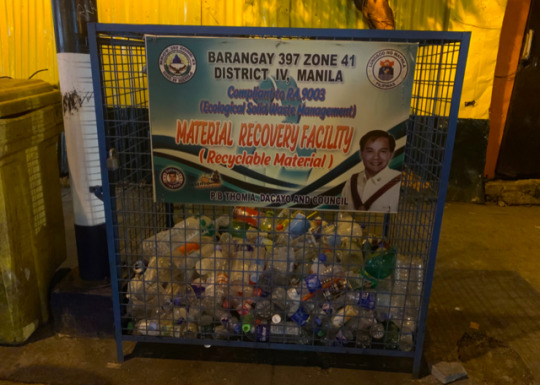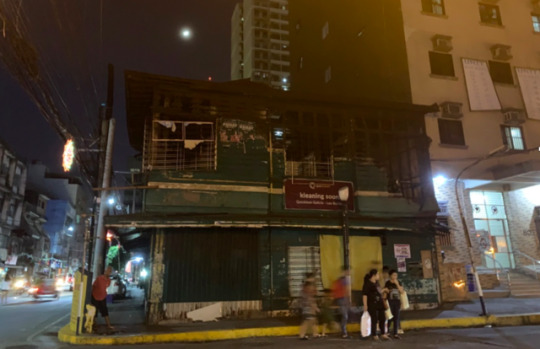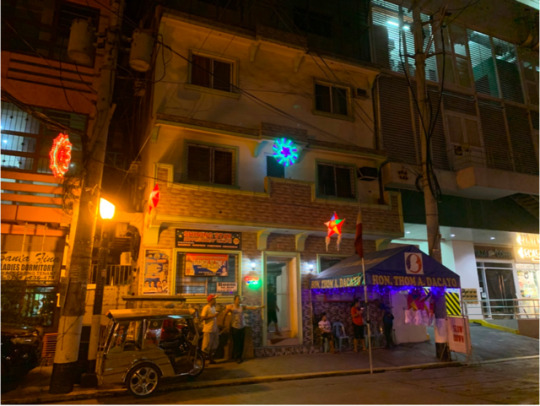Photo

Best Practice
As opposed to the photo shown for the Hazardous Places, this trashcan for recyclable materials was found right in front of the Barangay Hall. Although many people still find it difficult to be able to segregate their trash properly, this is a step in the right direction.
0 notes
Photo

Hazardous Places B
The photo shows one of the three remaining wood houses in the barangay. His poses as a hazard because the material it is made of is weak and has a high chance of collapsing in on itself if ever another earthquake strikes.
0 notes
Photo

Hazardous Places A
The two pictures show how the citizens of the barangay fail to follow the rules of segregation for their waste. What is ironic about the photo is how there is a poster with a slogan that says “Tapat Ko, Linis Ko”, but there is a pile of trash right beside it. We Fililinos must learn how to practice discipline even in the smallest tasks, like segregating our trash, and making sure to put them in the right containers for disposal.
0 notes
Photo

Safest Place
The safe place that I chose to show is the Barangay Hall that I went to. Each day, there is a different Kagawad in charge, and together this team works together to maintain peace and order in the vicinity. The Barangay also has committees which include the Committee on Appropration, Committee on Health, Committee on Education, Committee on Clean and Gree, Committee on VAWC (Violence Against Women and Children), Committee on Disaster, and the Committee on Peace and Order. Each of the Kagawads are in charge of a Committee that aims to further better the community.
0 notes
Photo

Since I wasn’t able to go back home to my province (Sorsogon) for the interview, I decided to go to one of the Barangay Halls in España. It wasn’t very hard to locate because I first asked my classmates who attended their Junior High School years in UST, and they told me exactly were to find it. Thankfully the Barangay Tanod I was able to interview was very accommodating and well-informed to the Disaster Risk Reduction procedures that are exercised in the Barangay. Kagawad Ferdinand Comitan was able to identify that the most common hazard that hit the vicinity was flooding, which was usually caused by heavy rainfalls and affects a wide area and therefore many people. Fortunately, the flood subsides fairy quickly, and does not inconvenience the barangays citizens for long periods of time. Another hazard mentioned was earthquakes. These do not happen very often, but “the Big One” is thought to hit any time. Thankfully, the advancement of technology has improved greatly through the years and has made communication much easier. Kagawad Comitan stated that in the earlier times, before mobile phones were used as widely as they are now, passing on information was very difficult. Nowadays, National Communications, Metropolitan Manila Development Authority (MMDA), Maynilad, Nawasa, MERALCO, and others inform people through innovative technology. Information on the oncoming disasters and how to prepare ourselves for it may also be passed by word of mouth through friends and family members. Making sure that many people are ready to face the worst is ideal to lower the harmful effects towards the citizens. Floods and earthquakes may cause damage to infrastructures and affect people’s lifestyles greatly. If a disaster hits, people are unable to go to school or attend classes. They are confined in their homes to wait for the disaster to pass, or evacuate to a safer place when it is recommended. Once the disaster is over, the people of the barangay do community service to make sure that their vicinity is once again back to its pre-disaster state. Floods occur frequently in the vicinity due to the poor drainage systems and heavy rainfall. The severity of the effects of floods and earthquakes are lessened because the barangay is well developed with new buildings. The houses are well-built with cement instead of wood, because wood houses tend to receive the most damage from the disasters. Only three houses made of wood remain in the vicinity. When Kagawad Comitan was asked as to who will be the most affected if a disaster strikes, he answered that nobody can be certain as to who will be affected the most. However, I think that the ones who will be most affected are the people who are unaware of the incoming disasters and procedures on how to manage them.
0 notes